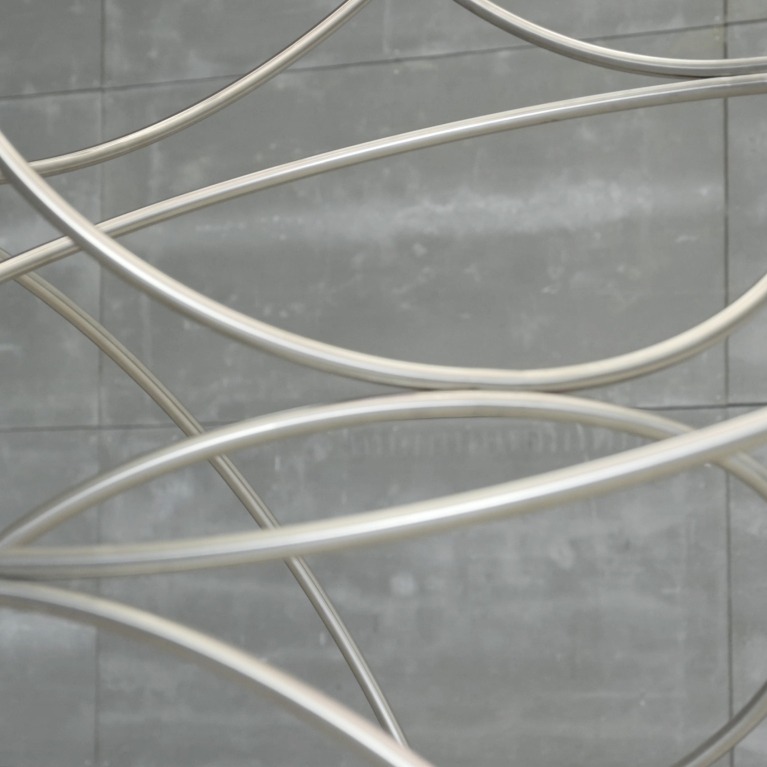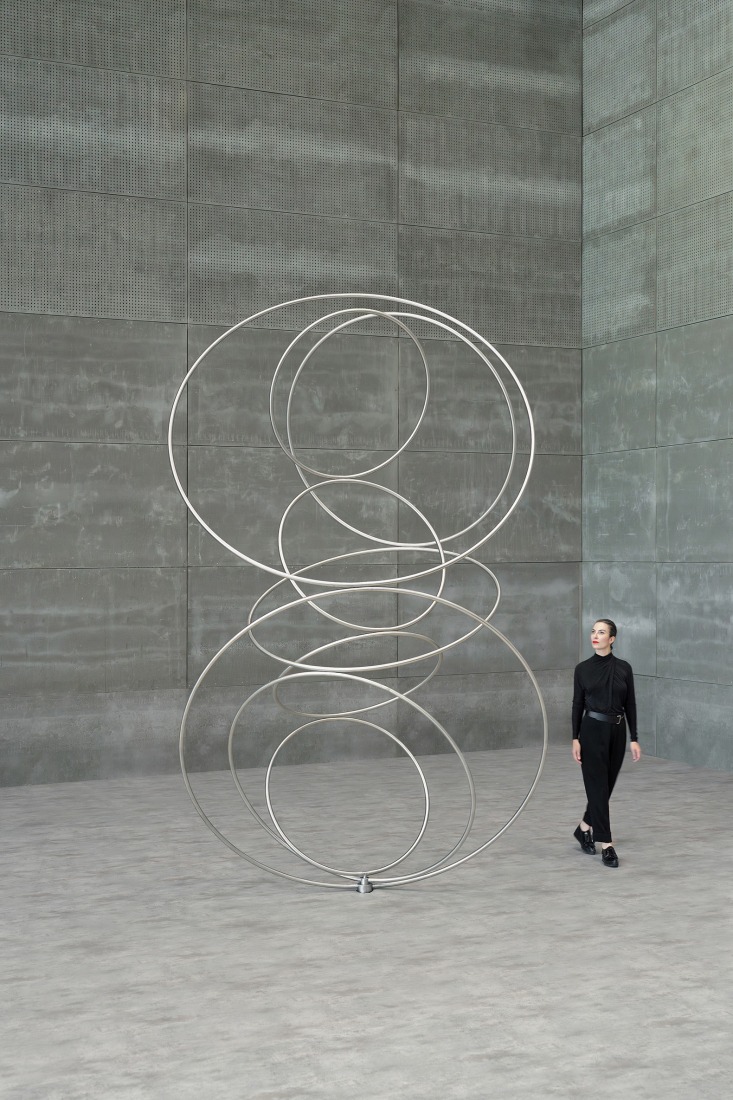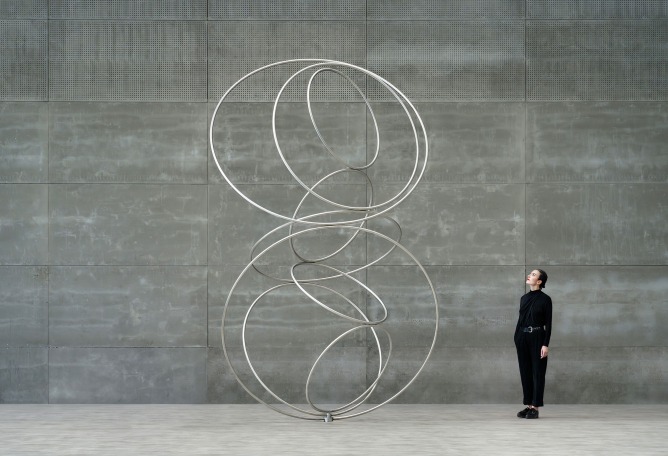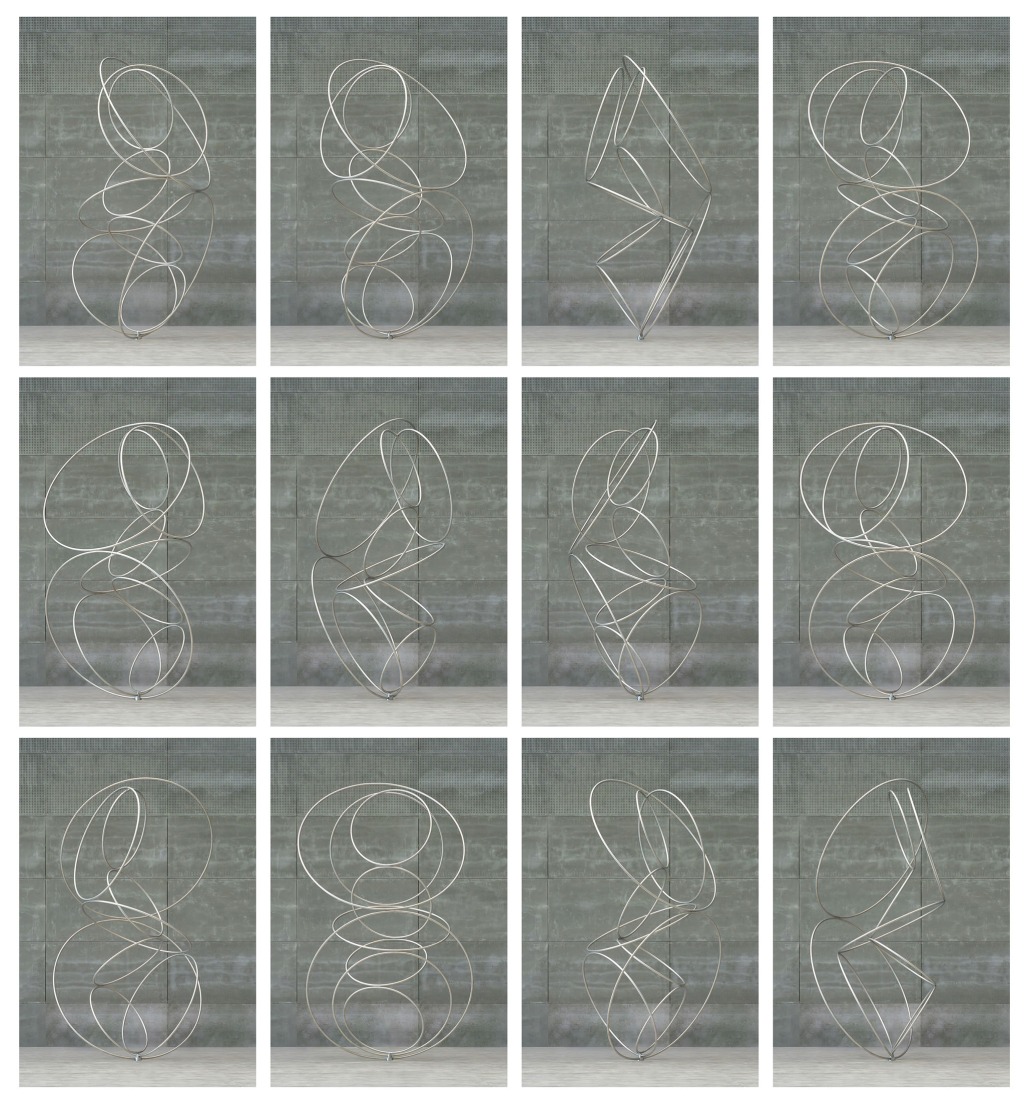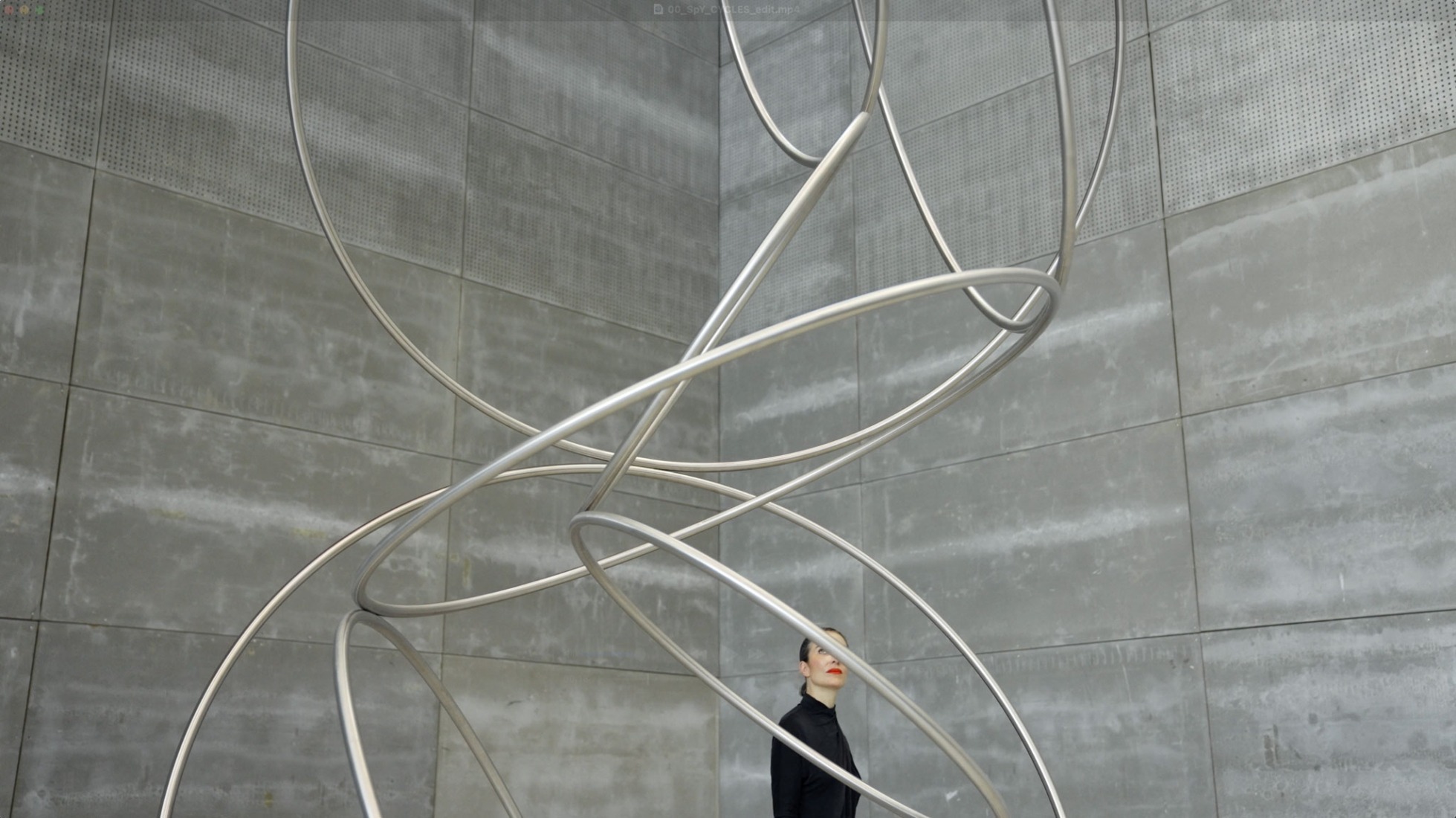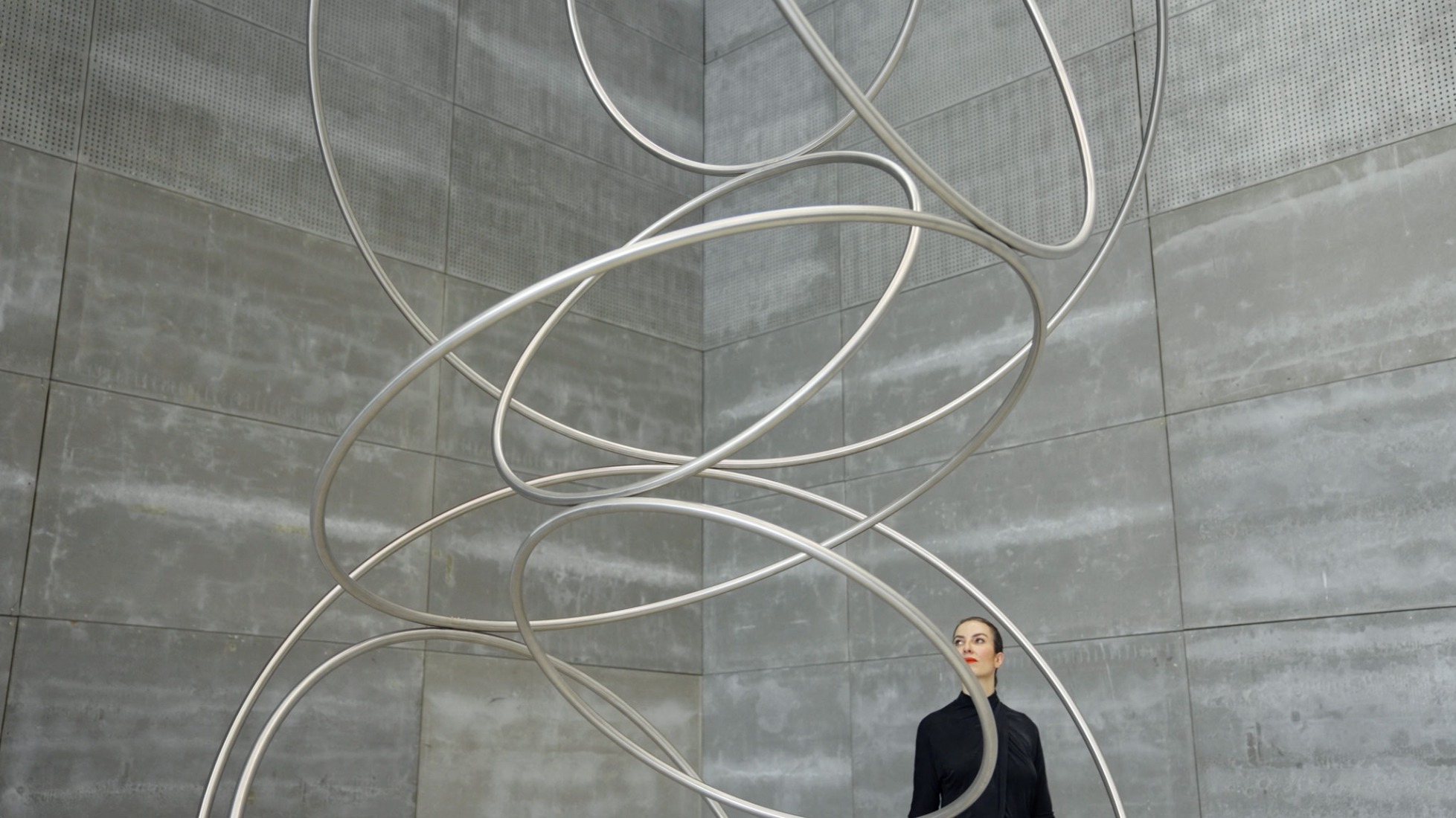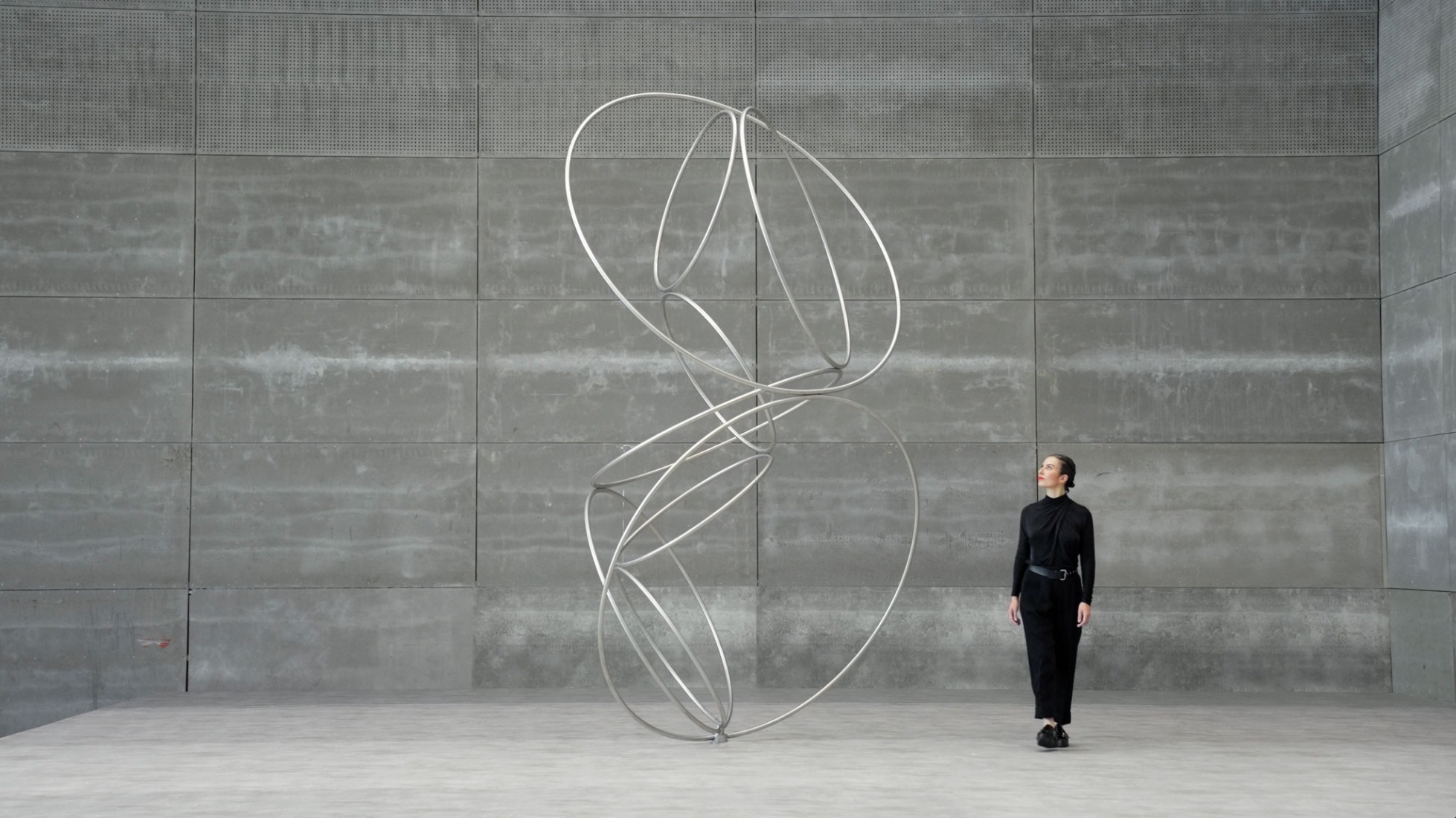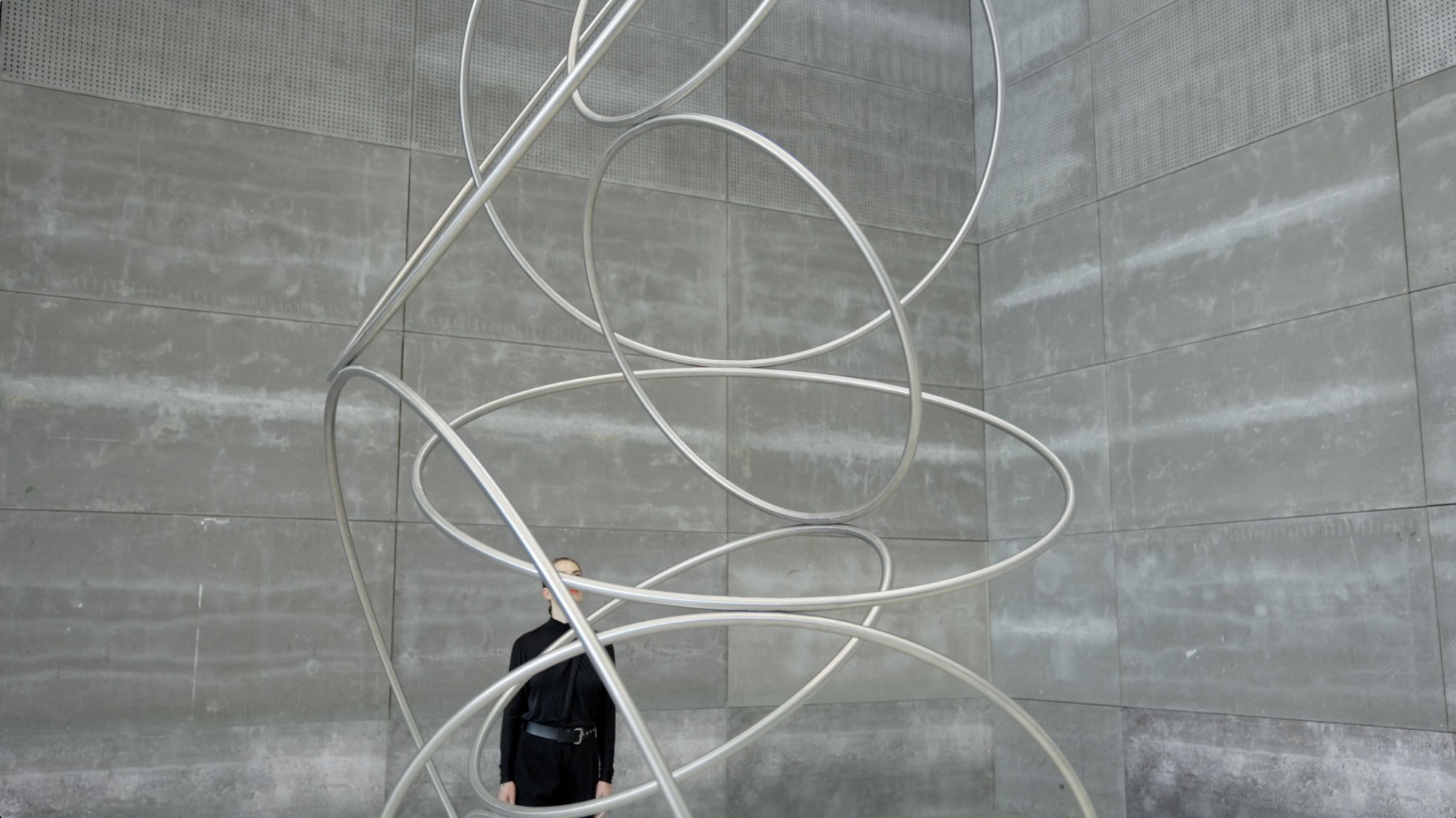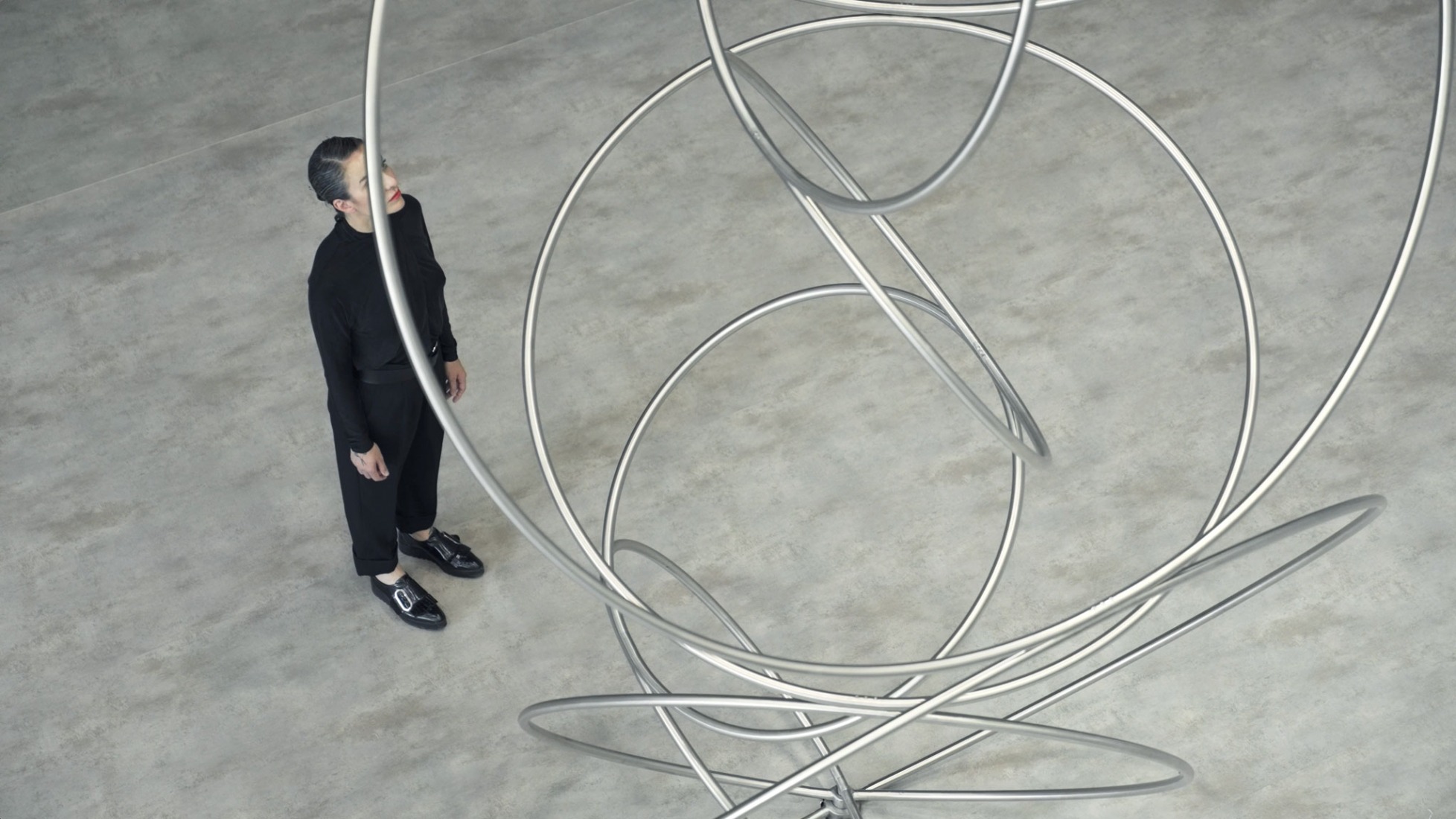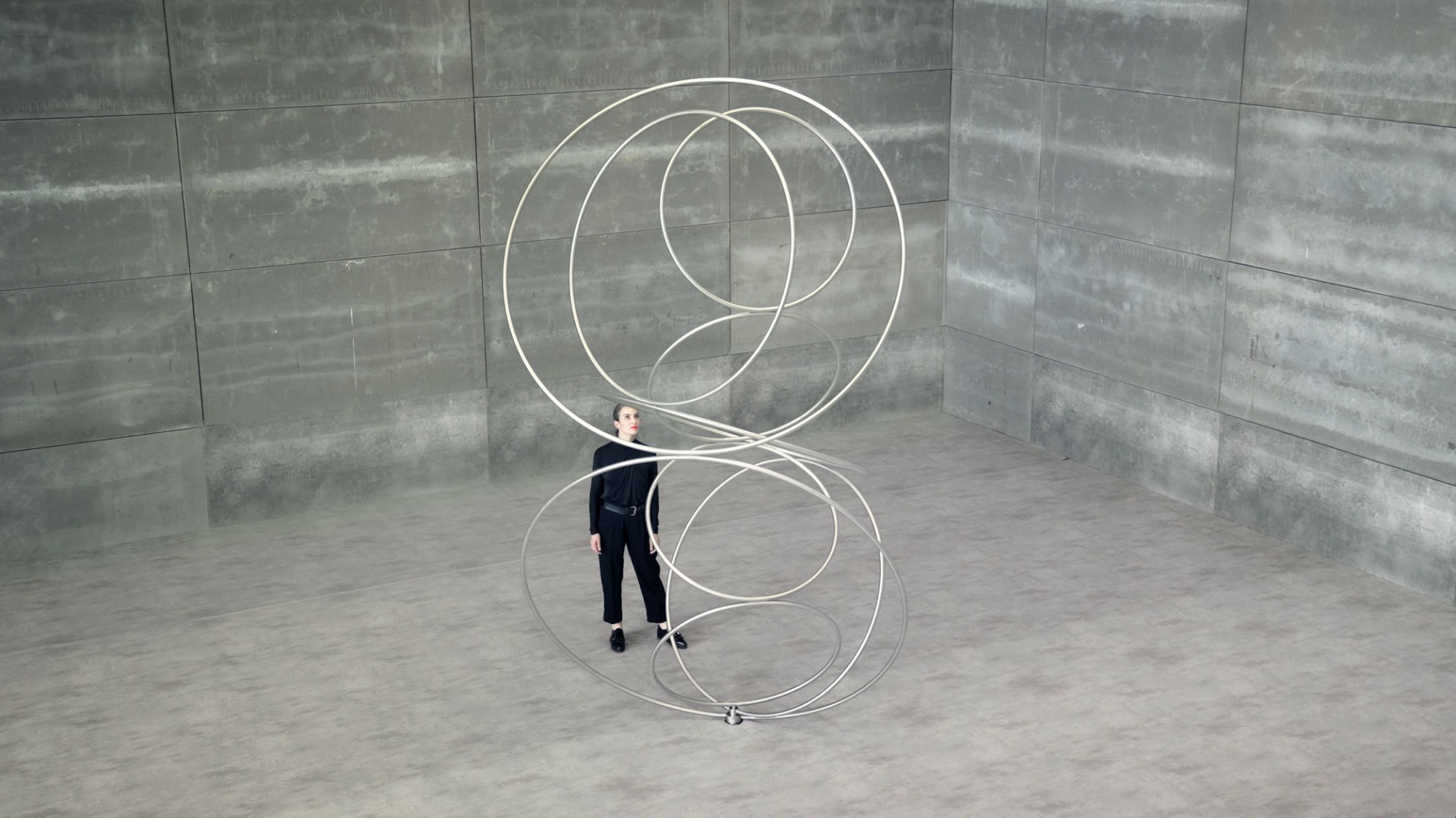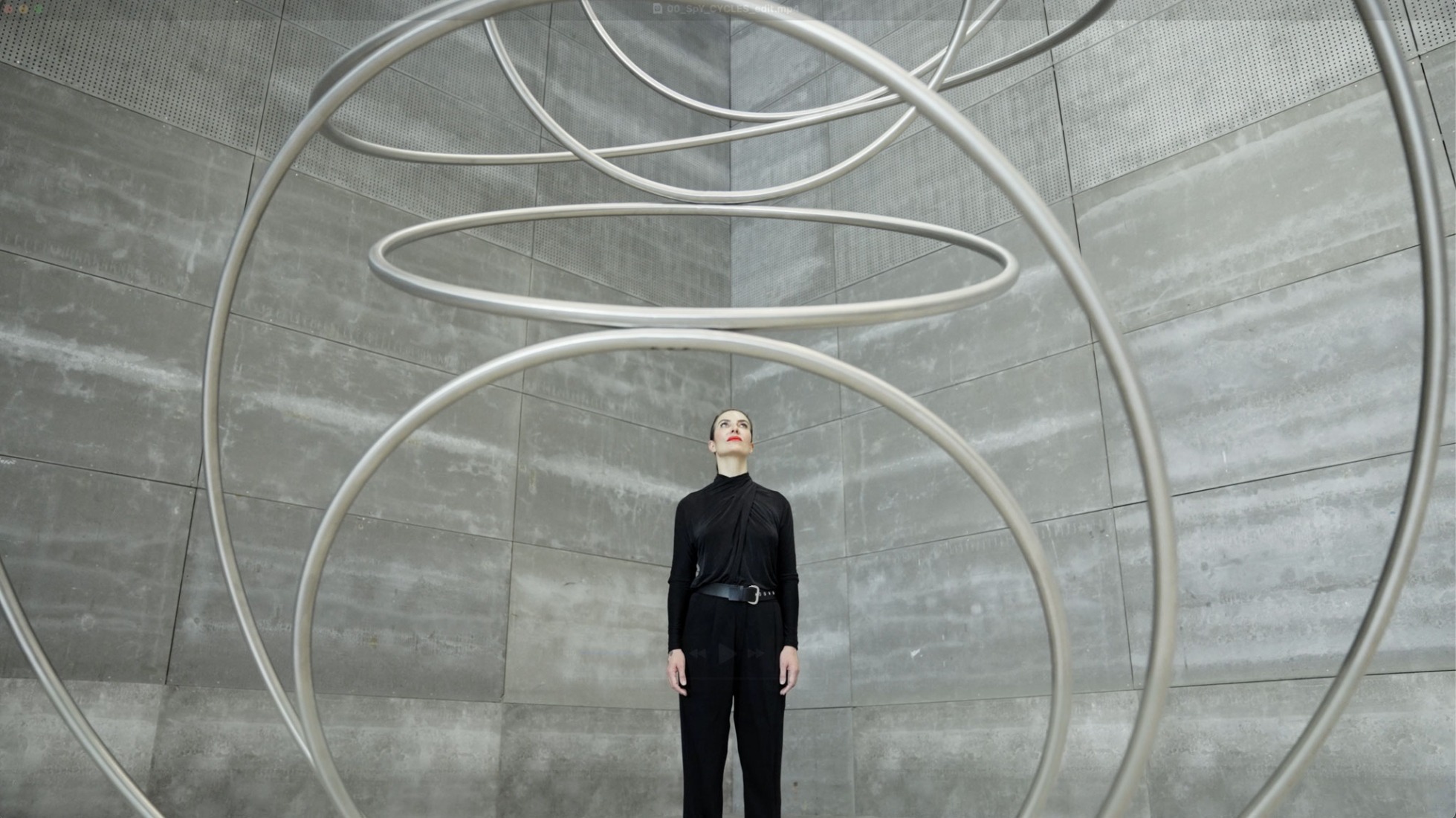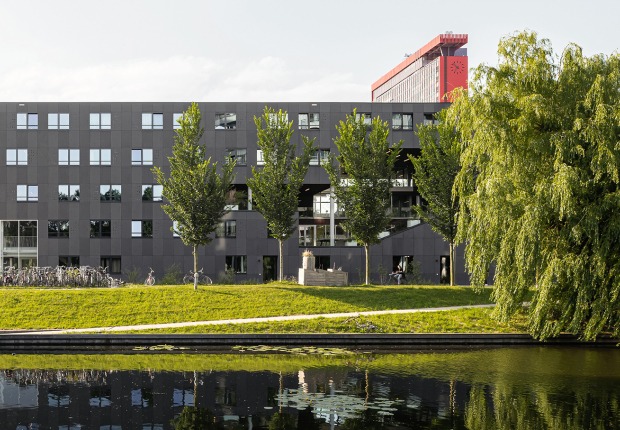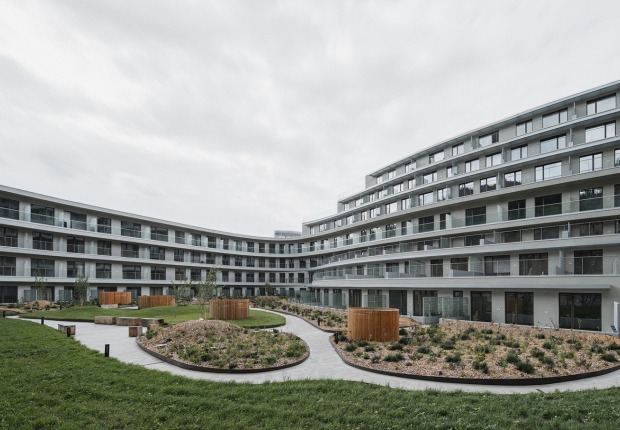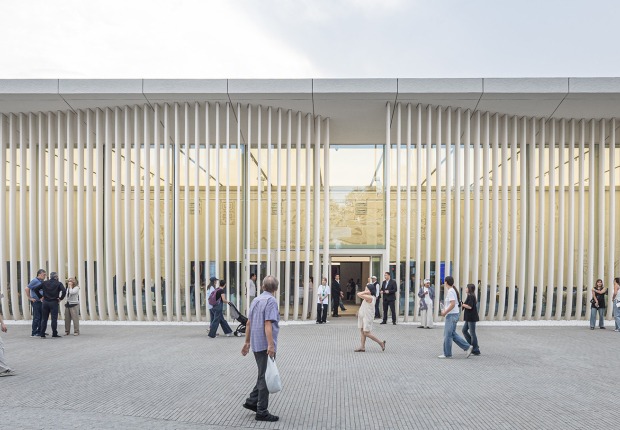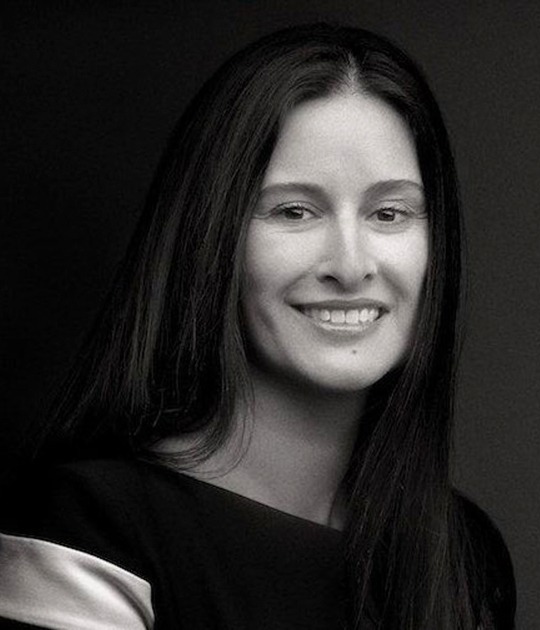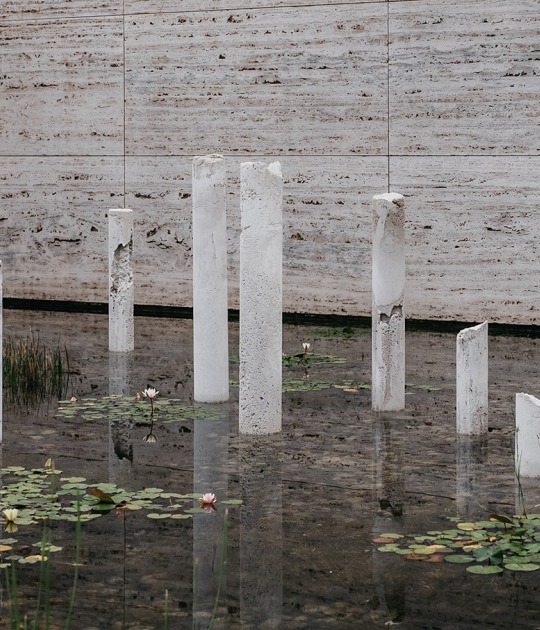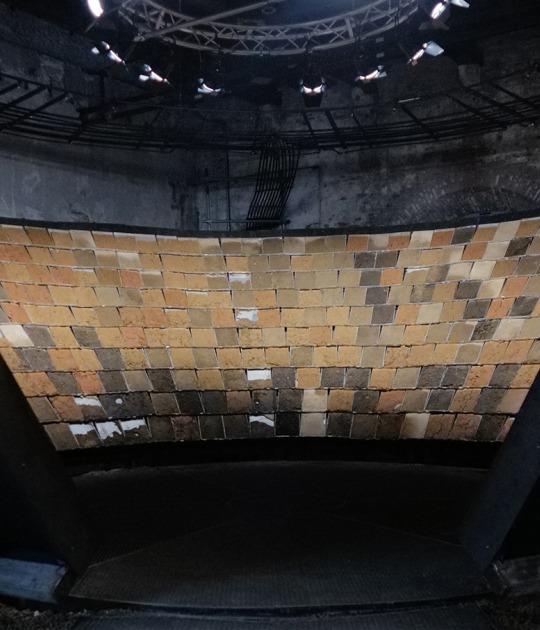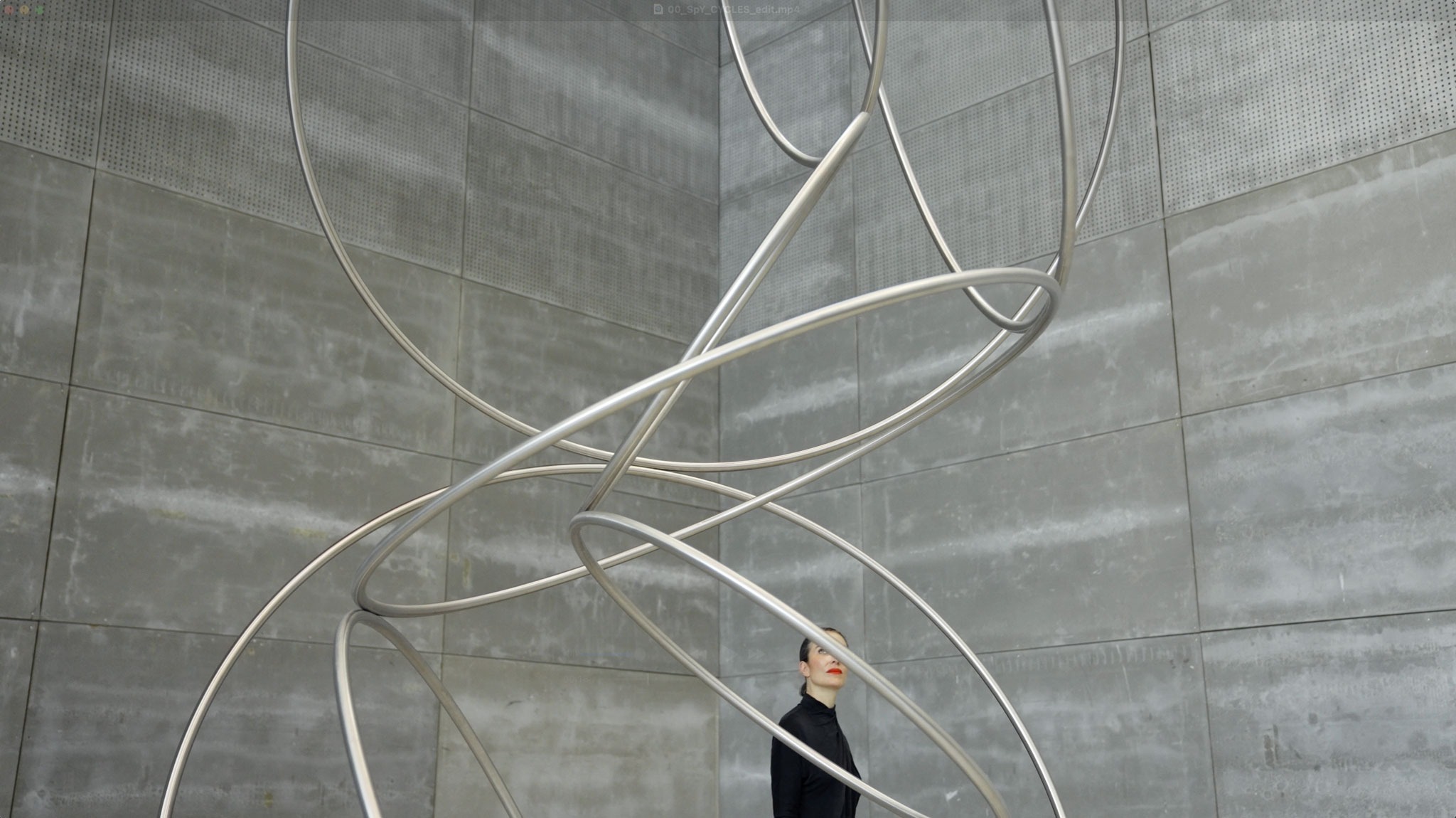
This constant rotation disorients the gaze and blurs spatial references, making it impossible to establish a stable image. The viewer perceives the loss of formal certainties and faces a feeling of perceptual instability.
SpY uses time and movement as sculptural materials, directly affecting the viewer's perception and understanding. Thus, Cycles explores mobile geometries and the perceptual dimension of art, inviting the public to actively participate in an experience of visual dislocation.
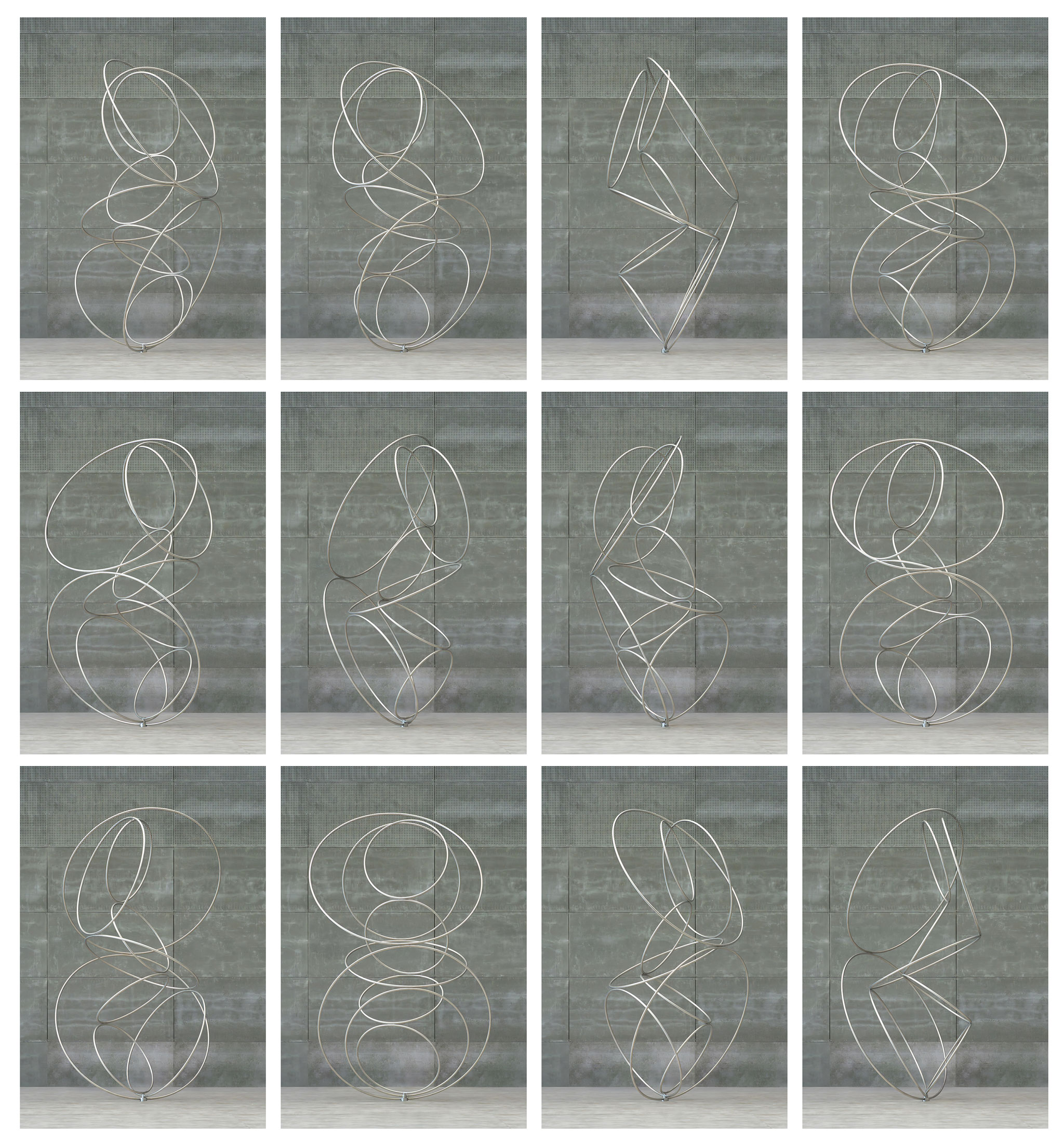
Cycles by SpY. Photograph by Rubén P. Bescós.
Project description by SpY
Cycles is a kinetic sculpture composed of nine rings that rotate on their axis, generating a visual ensemble in continuous transformation.
The rings rest on top of each other in a delicate balance that suggests a stability as calculated as it is fragile.
As they rotate, they change their appearance: what the eye perceives as a circle can become an ellipse, and vice versa, depending on the angle of view and the speed of rotation.

Driven from its base by a mechanism, the work unfolds a perpetual choreography: a continuous cycle that produces infinite patterns, in which the forms collide visually and transform before the viewer's eyes.
In this process, figures that seemed stable become ambiguous, generating illusions that affect the audience's perception. The constant rotation confuses the spatial reading of the rings and blurs the notions of rotation and depth.
Cycles invites us to rethink the sculptural form not as a finished object, but as a consequence of time and movement. It is a proposal that sculpts time and turns the gaze into an active, physical, and mental act.
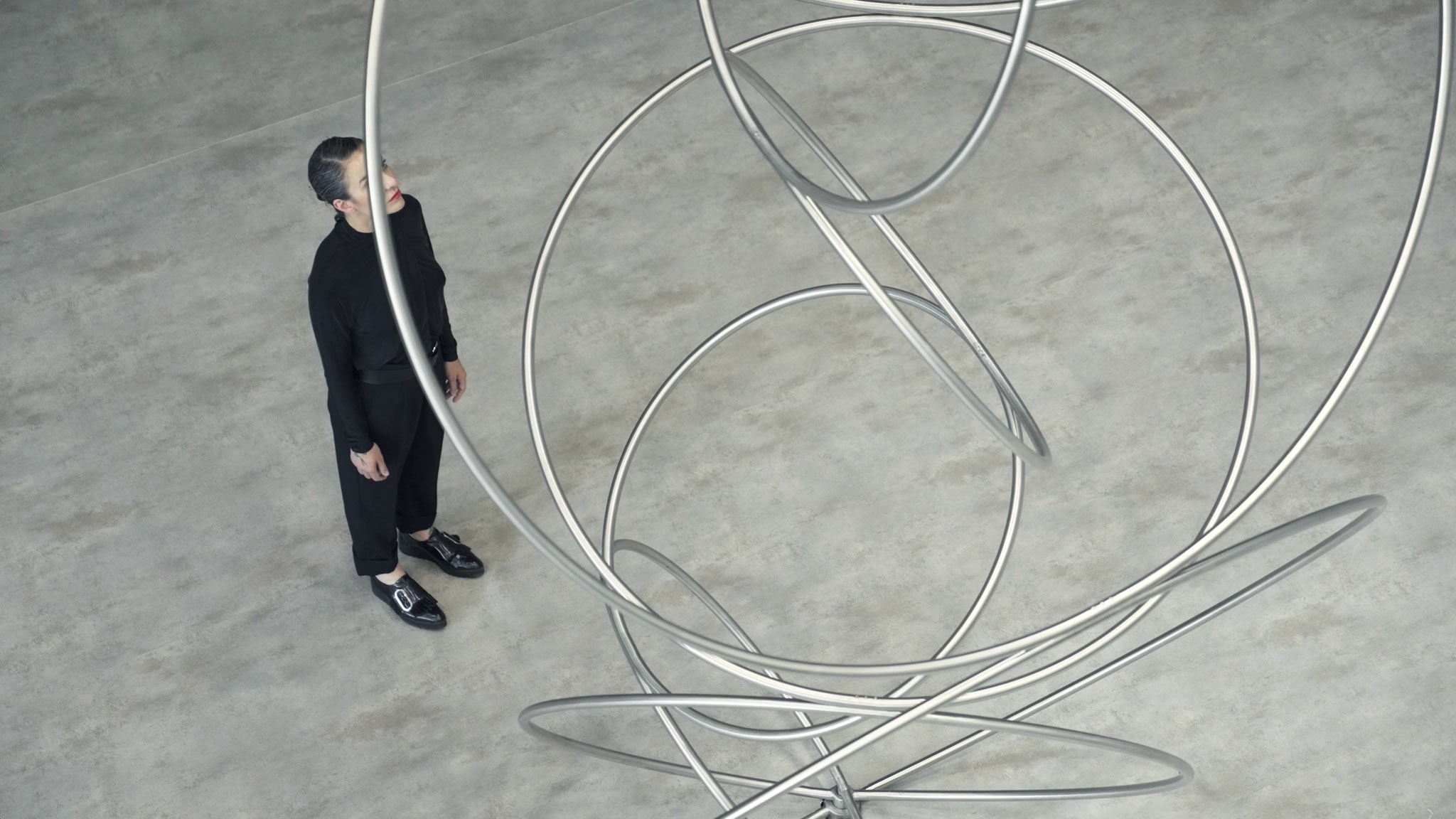
In Cycles, SpY uses movement and time as sculptural materials. These not only alter the perceived form but also directly affect understanding, causing a state of perceptual dislocation.
The loss of spatial references prevents a stable image of the sculpture from being fixed, producing a sense of visual disorientation.
Continuing his research into kinetic systems and geometries in motion, SpY explores perception and time as artistic tools, actively involving the audience in the experience of his works.
